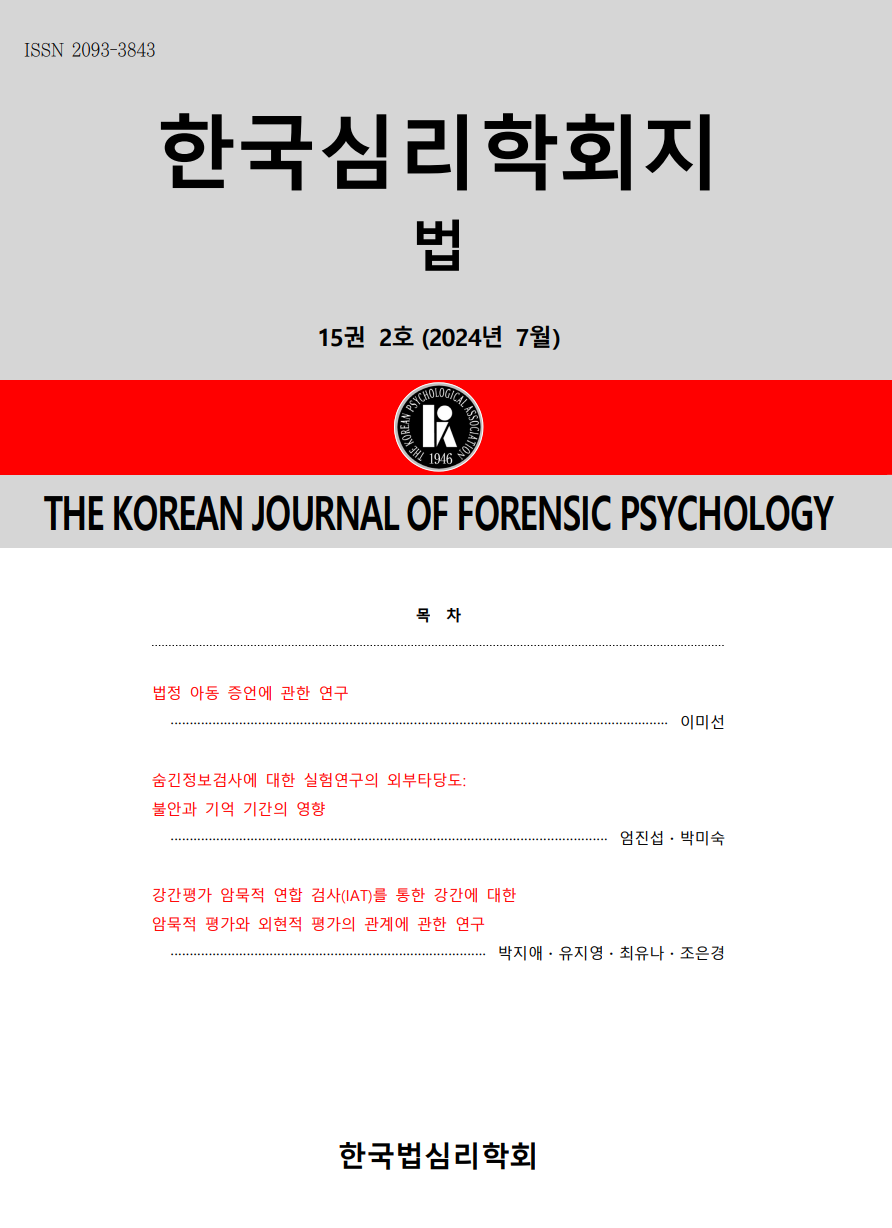open access
메뉴
open access
메뉴 ISSN : 2093-3843
ISSN : 2093-3843
Discriminating the lie of suspect is one of the important tasks in criminal investigations. Lie are known to induce cognitive loads due to additional cognitive task such as creating a false reality ord monitoring their statements. The increase of the cognitive load during lying has been observed in studies using neurophysiological measures (e.g., EEG and fMRI), but also observed in keyboard strokes (keyboard input patterns) during writing their statement. Lie detection using keyboard strokes has the advantage of having fewer test restrictions and enabling qualitative analysis of statements, but it is a method that has not been attempted in Korea. This study investigated whether keyboard stroke measures were changed during lying in Korean population. Participants (N=38) typed their diary (baseline) and contents of the video they watched (free recall task). The witness group (n=22) provided a instruction to honestly write what they witnessed, and the lie group (n=16) provided a instruction to write the content as if the suspect had never committed a crime. When comparing the keystroke measures of baseline and free recall, any significant change was not observed in the witness group whereas number of keystrokes per second, the first input time, and the average pause time were significantly changed in the lie group. Specifically, the number of keystrokes per second and the first input time slowed down, and the pause time increased during lying. This result shows that keyboard type behaviors were affected with the increase of cognitive burden when writing deceptive statements, suggesting that keyboard stroke could be an effective indexes for detecting lying.